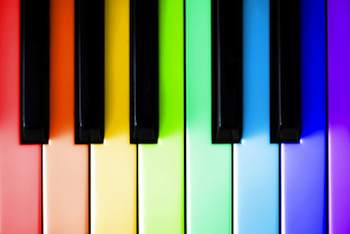- MENU
- HOME
- SEARCH
- WORLD
- MAIN
- AFRICA
- ASIA
- BALKANS
- EUROPE
- LATIN AMERICA
- MIDDLE EAST
- United Kingdom
- United States
- Argentina
- Australia
- Austria
- Benelux
- Brazil
- Canada
- China
- France
- Germany
- Greece
- Hungary
- India
- Indonesia
- Ireland
- Israel
- Italy
- Japan
- Korea
- Mexico
- New Zealand
- Pakistan
- Philippines
- Poland
- Russia
- South Africa
- Spain
- Taiwan
- Turkey
- USA
- BUSINESS
- WEALTH
- STOCKS
- TECH
- HEALTH
- LIFESTYLE
- ENTERTAINMENT
- SPORTS
- RSS
- iHaveNet.com: Health
Wendy Paris, Psychology Today

The use of music and rhythm in physical therapy improves gait and mobility in Parkinson s patients and those who ve suffered a stroke or traumatic brain injury
A retired dentist and former big-band leader, John (see note) was grappling with the limited mobility, poor balance, and painfully slow gait of Parkinson's disease. One of his greatest challenges was walking from his bedroom to his TV room. He'd freeze when the floor changed from wood to carpet. It could take him 15 minutes to traverse his own home.
Music therapist Kimberly Sena Moore visited John regularly as a home health aide during her undergraduate years at the
"When the introduction was over, he just marched down the hall to the bedroom," says Moore. "It was amazing."
After that visit, whenever John needed to walk, Moore would sing. The crippling hold of the neurodegenerative disease would suddenly loosen, and John could suddenly walk--or march--again.
Moore and her patient had accidentally discovered the rich connection between the auditory and motor systems. A 2009 literature review found more than two dozen studies showing that the use of music and rhythm in physical therapy significantly improves gait and upper body mobility in Parkinson's patients, as well as those who've suffered a stroke or traumatic brain injury.
In one study, 15 Parkinson's patients walked to a beat for 30 minutes a day. After three weeks, their speed improved 25 percent, compared to 7 percent in a control group.
In a German study published last year in Music Perception, 32 stroke patients with moderately impaired motor function received 15 sessions of music-supported training--producing tones, scales, or melodies on an instrument. The patients showed significant improvement in gross and fine motor skills, far greater than either of two control groups.
"Rhythm processed by the auditory system projects into the motor structures of the brain, creating entrainment," explains Aniruddh Patel, an evolutionary biologist at the
While auditory/motor entrainment is undisputed, researchers still don't know why these parts of the brain connect. Patel's theory, based on a study he conducted of a bird named Snowball he saw dancing on YouTube, is that entrainment happens only in species that are vocal learners. He says, "You can never train a dog, no matter how smart it is, to move to a beat."
To test his theory, Patel is trying to teach a horse to dance. Meanwhile, music therapists continue to develop music- and rhythm-based therapies to help people like John get moving again.
NOTE: Name changed to protect identity.
Available at Amazon.com:
Last Child in the Woods: Saving Our Children From Nature-Deficit Disorder
Copyright © Psychology Today. All rights reserved.
AGING | ALTERNATIVE | AILMENTS | DRUGS | FITNESS | GENETICS | CHILDREN'S | MEN'S | WOMEN'S
Health - Music Only Path to Movement for Some People With Motor Disorders